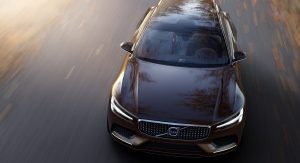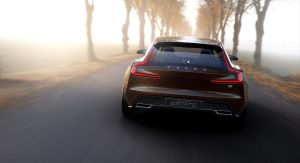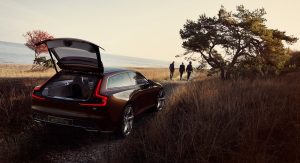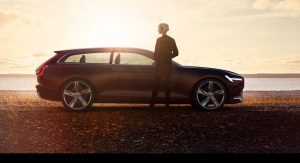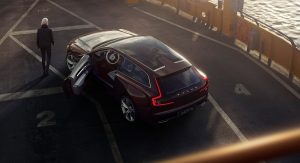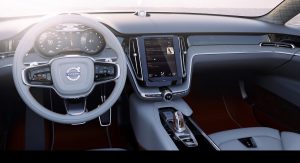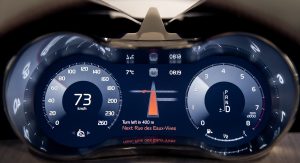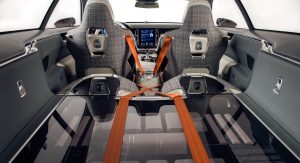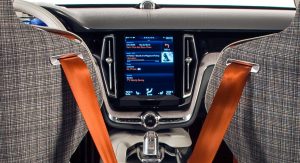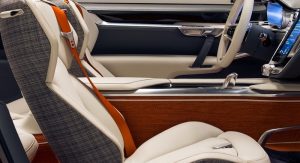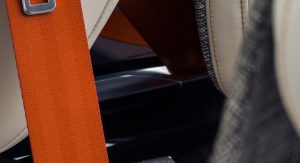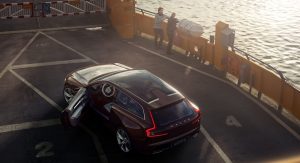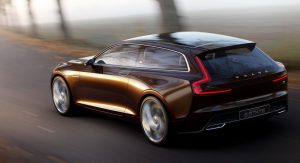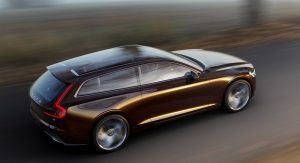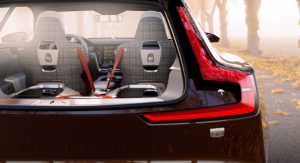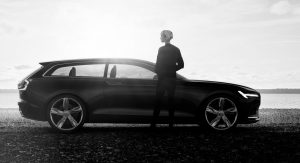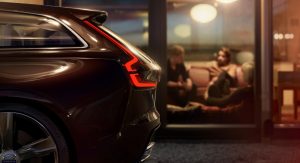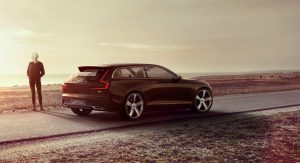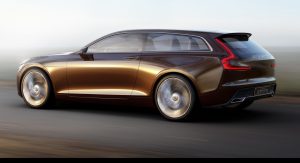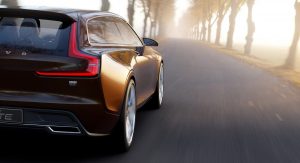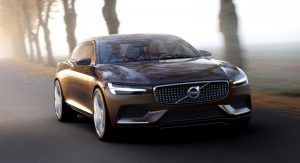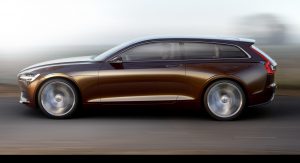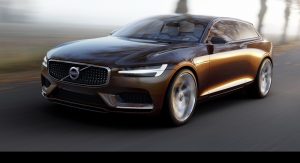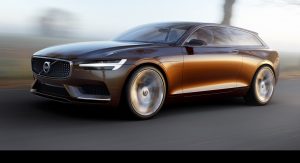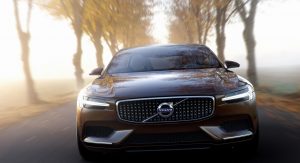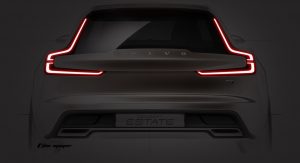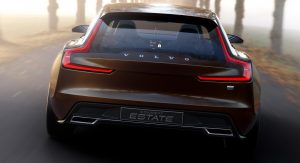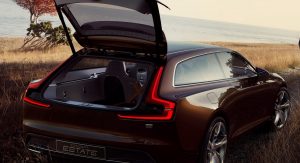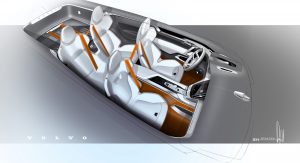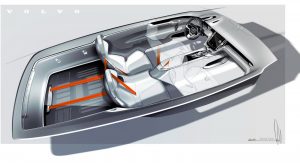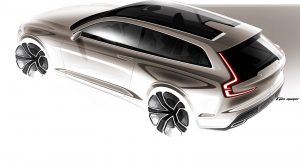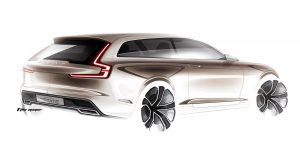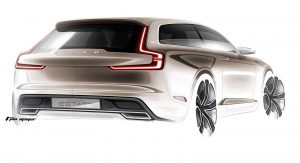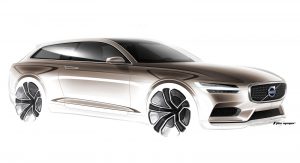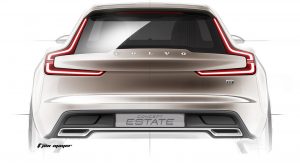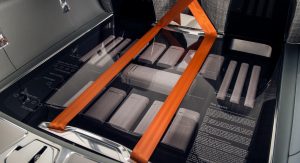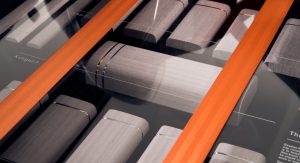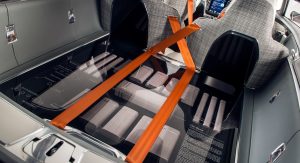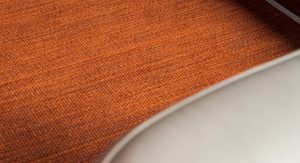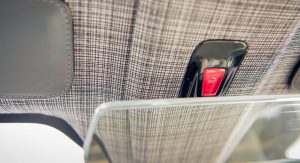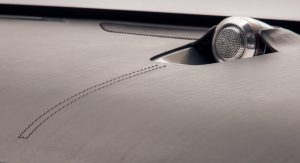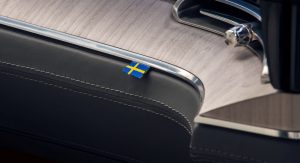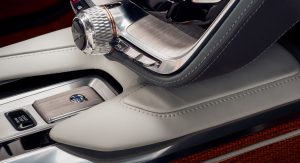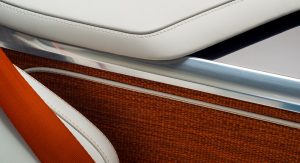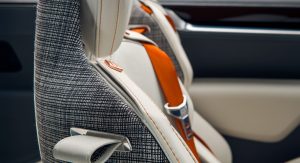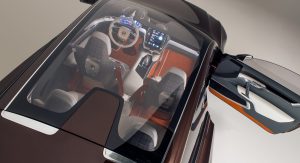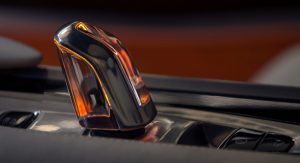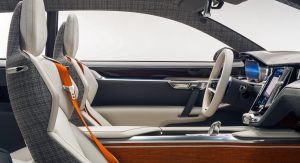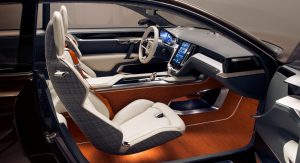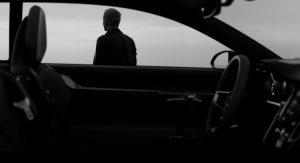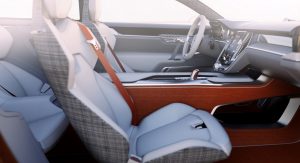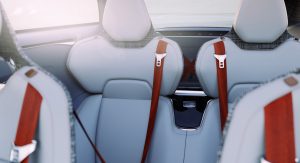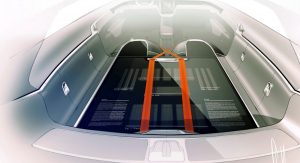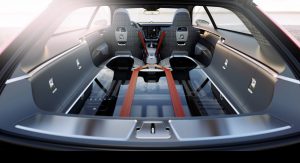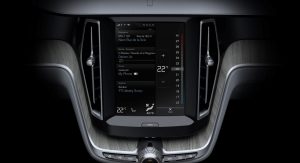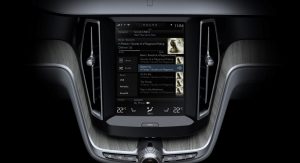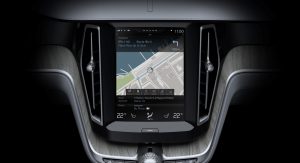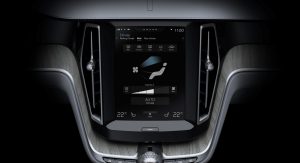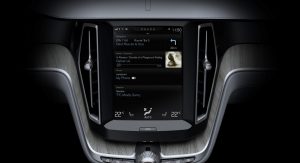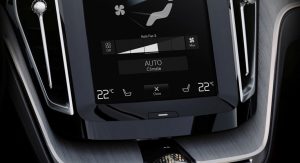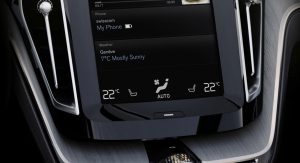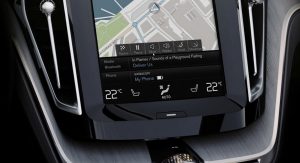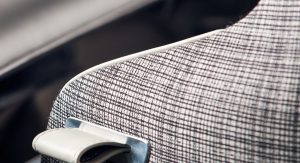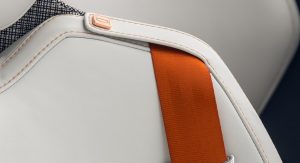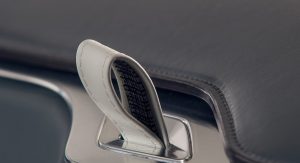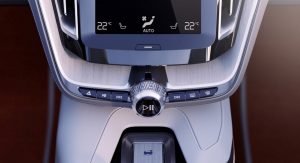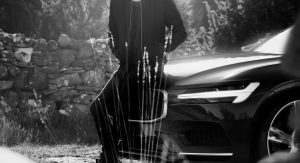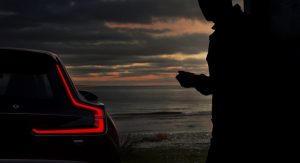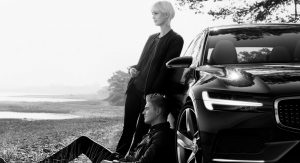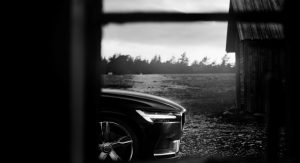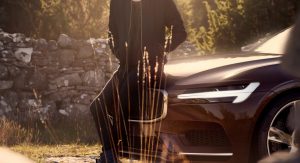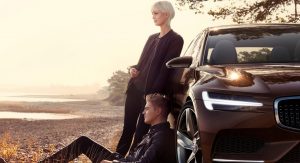Here’s our second and more detailed look at the new Volvo Concept Estate after photos of the Geneva Motor Show-bound study were published online.
The short story is that, Volvo’s third study after the 2013 Concept Coupe and 2014 Concept XC compact crossover is the shooting brake version of the former, with the press details given focusing on the look and technology of the interior that will be first applied on the XC90 SUV.
Just below the beltline and with some exceptions like the front grille, the rear diffuser, and the bumper trims, the Estate is identical to the gripping Coupe. Most changes happen right above where the sleek roofline is replaced by a full-length roof with see-through panes and a hatch-like tailgate. And much in the same way that the Coupe was inspired by the 1970s P1800, the Estate echoes the design of the shooting brake-style 1800ES.
Naturally, the biggest difference inside is the extra space behind the front seats. However, Volvo did alter certain elements, such as the instrument panel that ditches the separate binnacles and replaces them with a single digital cluster, and added a sweet looking, tweed-like material on the back of the seats and the headliner.
As we said earlier, in the preliminary release, Volvo placed a lot of emphasis in the interior stating the design as well as the layout, feel and ergonomics, point to the path it will follow in the next generation of models beginning with the XC90 that will be revealed in the fall of 2014.
A centerpiece of the interior re-think is the elimination of as many traditional buttons as possible and their replacement with a large tablet-like touch screen control panel in the center console, with a small row of switchgear positioned just under for “crucial” functions like volume, play/pause, hazard warning and window heaters.
“The basic idea is to organise controls and information in a perfectly intuitive and user–‐ friendly way. Everything is exactly where you expect it to be, making the drive more enjoyable, efficient, and safe,” says Thomas Ingenlath, Senior Vice President Design from Volvo Car Group.
According to the Swedes, the new interface, which will be used on the next XC90, supports tablet-like functions such as swiping and pinching, and interacts with the adaptive digital display in front of the driver as well.
“Not having to deal with buttons and controls for a growing number of functionalities is like being freed from a pair of handcuffs,” stated Robin Page, Design Director Interior of Volvo Car Group.
Ingenlath pointed out that users will feel right home with the use of a large touchscreen, and that sounds about right if you’re accustomed to tablet devices – it does, however, raise some concerns to as whether this solution will be ergonomic and safe in an non-distractive way for drivers.
“This goes far beyond just putting a large tablet in the centre of the dashboard,” explains Ingenlath. “We have created a digital environment that is fully integrated in the car. Information, navigation and media are high up and easy to keep an eye on. The phone controls, application icons and climate controls are located low, comfortable to reach and touch. Using the screen is so logical that it will be part of your muscle memory very quickly.”
And that about rounds it up, but before I shut down, let me say this: I understand that S60s and XC90s is what Volvo needs to survive as a company in the very competitive premium (ish) world, but if it wants to be taken seriously by enthusiasts and people who can carry the word around, it needs to build cars (with the appropriate performance and handling characteristics, of course) like the Concept Estate and Coupe. Give people something to crave about your brand. It might not fill your coffers, but if done right, it will earn you something far more valuable: respect.
By John Halas
PHOTO GALLERY



![New Volvo Concept Estate is Too Pretty to Remain a Study [75 Photos]](https://www.carscoops.com/wp-content/uploads/2014/02/Volvo-Concept-Estate-501.jpg)
